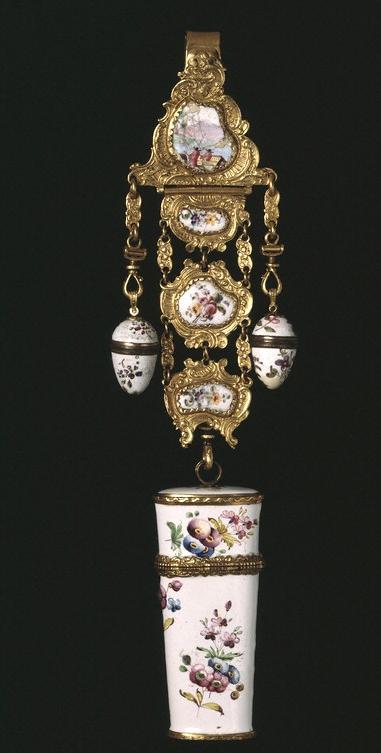Changing Fashions: Georgian Jewellery
Jewellery in the early nineteenth century, despite the Industrial Revolution and rapid mechanisation of Britain, largely focused on the styles of the past. Jewellers attempted to revive old techniques in order to recreate designs from antiquity. Classical motifs became particularly popular during the early years of the nineteenth century, looking back to the 'glories' of Ancient Greece and Rome.
Whilst this information might not be surprising, you might not have known that Georgian jewellery predates the practice of hallmarking. As such, it is often difficult to ascertain exactly what materials in what quantities have been used in pieces of Georgian jewellery. Silver was the most commonly used metal to craft pieces of jewellery, although 18ct gold was sometimes used for particularly fine and expensive pieces. Pinchbeck was a metal that was invented in the early eighteenth century and made by combining zinc and copper. Pinchbeck was often used to make cheap pieces of jewellery in the Georgian period, although it fell out of use by 1854 when low carat gold was legalised.
As the quote from Fanny Austen-Knight suggests, the Georgian period saw an increase the use of gems in jewellery and the adornment of clothes. Pearl, garnet and different coloured topaz all became popular, making jewellery much more colourful than before. Jane's topaz cross quickly springs to mind, using faceted amber topaz to make a truly delightful piece. The use of precious stones other than diamonds made jewellery more affordable for the burgeoning middle class, and crosses like Jane's became more and more popular. Matching sets also grew in popularity as a way of showing your wealth and esteem, able to afford not just one precious stone but many.
If this quick look at Georgian jewellery has got you thinking, why not take a look at our collection of Regency inspired jewellery that features our stunning Jane Austen Replica Topaz Cross!
If you don't want to miss a beat when it comes to Jane Austen, make sure you are signed up to the Jane Austen newsletter for exclusive updates and discounts from our Online Gift Shop.





3 comments
Hi,
I couldn’t help but notice that you’ve put a picture up of Hortense Beauharnais who is French as Fanny Austen-Knight. I’m not sure if it’s to just depict the jewelry but it would be nice to have her referenced .
Many thanks,
Emma
Emma
The portrait appearing in your article is of Hortense de Beauharnais, daughter of Empress Josephine by her first marriage, thus stepdaughter of Napoleon. She also became Napoleon’s sister-in-law, when she married his brother Louis. This couple became King and Queen of Holland during Napoleon’s rule. Their eldest son, Louis Napoleon, became Emperor Napoleon III of France. The original of this portrait is hanging at Highland, the home of President James Monroe, near Charlottesville, Virginia, along with portraits of Hortense’s brother, Eugene de Beauharnais, and of Madame Henriette Campan, who was headmistress of the school Hortense attended in Paris. There she met Eliza Monroe, daughter of Jame Monroe, then Minister to France from the United States. The two girls became great friends, and these 3 portraits were wedding gifts from Hortense to Eliza upon Eliza’s marriage.
Anna Marie Ellis
I love Georgian and Victorian jewellery – so much nicer than most of the modern styles, and there is always the wish that the items could speak – I wonder what tales some of them could tell us! Jewellery is so very personal, and can give you clues about the personality of the wearer.
I often wonder what ‘old-fashioned jewels’ of her mother’s Elinor took to the jewellers in London (in ‘Sense and Sensibility’) and what was the outcome of her negotiations with the jeweller, I wonder? This ws on the never to be forgotten occasion when she discovered that she was in the company of the very superior Mr Robert Ferrars, but he was far too busy concentrating on the design of his new gold and pearl toothpick case to give her much of his notice!
Anonymous
Leave a comment
This site is protected by hCaptcha and the hCaptcha Privacy Policy and Terms of Service apply.